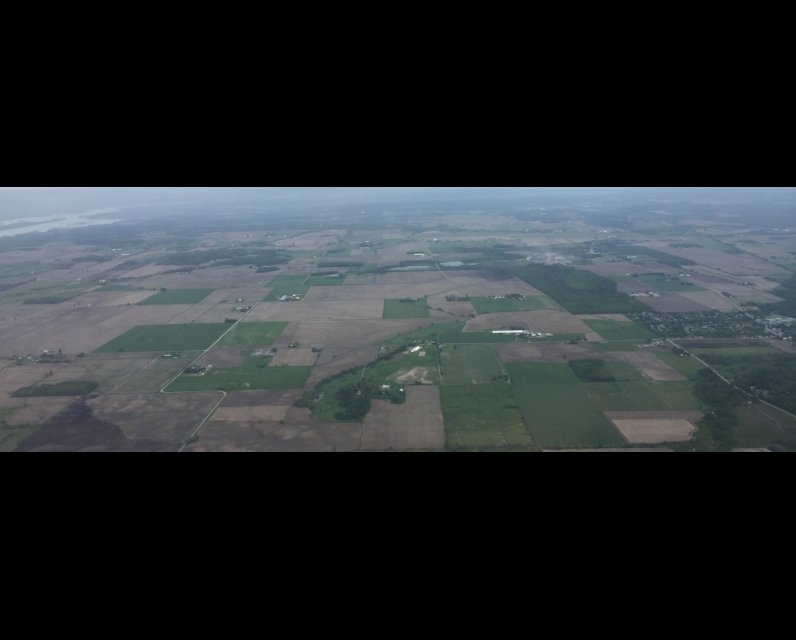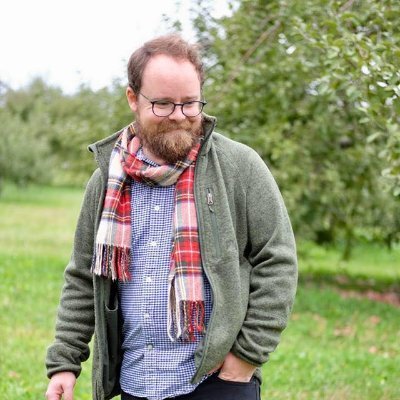Unpublished Opinions
Christopher K. Bisson is a PhD candidate at the University of Ottawa’s School of Political Studies, and a policy analyst for Seed Change Canada. His doctoral research investigates practices of large-scale farmland investments in eastern Ontario. Over the last four years he has operated an organic market garden in Ottawa, and published on permaculture and agroecology movements in Canada.
Moving The Ottawa Urban Boundary Will Cause Significant Farmland Losses: Preliminary Doctoral Research Finds

Moving The Ottawa Urban Boundary Will Cause Significant Farmland Losses: Preliminary Doctoral Research Finds
Christopher Kelly-Bisson,
PhD Candidate, School of Political Studies, University of Ottawa
cbiss045@uottawa.ca
The upcoming vote on the Ottawa Official Plan has significant implications for the preservation of farmland, rural ecology, local food system, and viability of agriculture in Ottawa. I am a fifth year PhD candidate at the University of Ottawa currently preparing a dissertation on my research into the distribution of farmland ownership in eastern Ontario. My findings have not yet been the subject of a dissertation defence or peer-review by a scientific journal. However, the pressing nature of the upcoming decision on Ottawa’s Official Plan has led me to share some preliminary findings on how harmful the expansion of the urban boundary would be for agriculture within the City of Ottawa.
- My preliminary data suggests that farmland investment companies have increased their holdings within Ottawa by an estimated 70% between 2000 and 2017.
- The total estimated holdings of identifiable farmland investment companies in Ottawa is 7,998.6 ha (19,765.0 acres). OMAFRA estimates the total area of farmland in Ottawa as 102,152 ha (252,423 acres) in 2016. Farmland holdings by investment companies amounts to 8% of farmland in Ottawa, which may be increasing at an average yearly rate of 4%.
- The largest farmland investment company, Walton International, has accumulated 1,348.3 ha (3,331.7 acres of land) within Ottawa, just beyond the urban boundary.
- In fact, the farmland owned by private corporations are significantly clustered (12.1%) within five kilometers of the current urban boundary. Smythe (2015) has demonstrated that companies like Walton International successfully practice a strategy of buying farmland on the urban boundary and lobbying municipalities to expand it so they can sell to developers.
- These preliminary findings suggest (all things held equal) that by 2031, the sunset year of the 2020 Official plan, the amount of farmland owned by farmland investment companies will be 13.6% (13,851 ha) of total farmland in Ottawa.
- Farmland investment companies have two broad purposes for farmland investment: investment portfolio management or as part of the property development value chain. Walton International has as its explicit goal the speculative profits gained by selling the land to development companies building new housing and commercial subdivisions (Desmarais et al. 2015; Smythe 2015).
- There is strong preliminary evidence to suggest that the growth in farmland investment within Ottawa is all destined for development (as opposed to farmland as a securitized asset for investment portfolios).
- This means that an extensive expansion the urban boundary in Ottawa's official plan could put 13.6% (13,851 ha) of Ottawa's farmland at risk for development.
- The implications of such farmland conversion based on other studies are:
- Permanent farmland loss, reduced potential local food system capacity.
- Loss of ecosystem services from farmland loss.
- Upward pressures on already inaccessible farmland values, which would worsen the problem of farm succession in the city.
- Based on findings on cases in Edmonton, Alberta (Smythe, 2015) and Brantford, Ontario (Anonymous Interview), farmland investment cases for conversion produce difficult social and family cleavages weakening rural communities and producing tremendous stress on family farms.
- Considering the increase in mental health problems reported by farmers in Canada, this would no doubt make the outlook of farming feel even more bleak for farmers.
Methodology
The data compiled for this research was sourced through TerraNet digital land transfer report database. 13,232 properties with zoning permitting agriculture (excluding “urban agriculture” and current and abandoned quarries) in Ottawa, Prescott-Russel, and Stormont, Dundas, and Glengarry were analyzed using geographical information software. Properties were classified using various ownership categories. Property reports that indicate ownership by an explicit farmland investment firm as detailed by a company website or promotional literature were categorized as farmland investment firms. Many properties were listed as owned by anonymous numbered corporations or large-scale agricultural corporations, which may have farmland investment components to their operations. Best efforts were made to categorize these agricultural properties, however little information on these companies were publicly available. Therefore, this research’s findings are likely a low estimate.
Implications
Farmers in Canada are facing increasing levels of debt and input costs, greater transportation disruptions, poor access to energy, and commodity price volatility. Sectors that have faced recent trade disruptions are especially vulnerable. The most recent Agricultural Census (2016) shows that the number of farms in Canada are declining and being consolidated into larger holdings owned by fewer people. Agriculture in Canada is facing serious problems relating to the viability of farming and increased urban development pressure would be another factor resulting in farmers exiting production. The current rate of farmland loss we are experiencing in Ottawa through farmland conversion is going to put increasing strain on an already precarious food system.
Please consider the following preliminary findings from my research in your decision on Ottawa’s Official Plan. I feel like the preliminary findings from my doctoral research make a strong case to “Hold the Line” because we are likely to see increasing expansion of farmland investment for farmland conversion in Ottawa. In fact, given that farmland investment seems to be used as a risk-mitigating strategy of investment, my findings are probably very conservative given the likely post-pandemic recession we will be experiencing in the coming years.
Soil is practically a non-renewable resource given that it takes millenia to replenish at any viable scale. As our population increases and as climate change and trade conflicts make our food systems more insecure, I urge Ottawa City Council to hold the line on urban expansion.
Works Cited:
Smythe, Elizabeth Ann. 2015. “Local Food, Farmland, and Urban Development: A Case of Land Grabbing North American Style.” Canadian Food Studies 2 (1): 48. https://doi.org/10.15353/cfs-rcea.v2i1.29.
Desmarais, Annette Aurélie, Darrin Qualman, André Magnan, and Nettie Wiebe. 2017. “Investor Ownership or Social Investment? Changing Farmland Ownership in Saskatchewan, Canada.” Agriculture and Human Values; Dordrecht 34 (1): 149–66. http://dx.doi.org.proxy.bib.uottawa.ca/10.1007/s10460-016-9704-5.



Comments
Be the first to comment